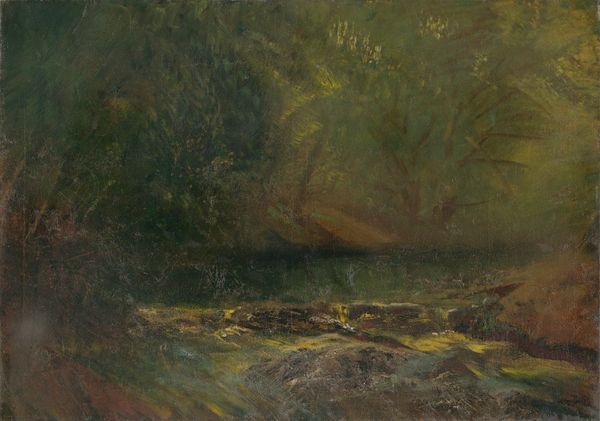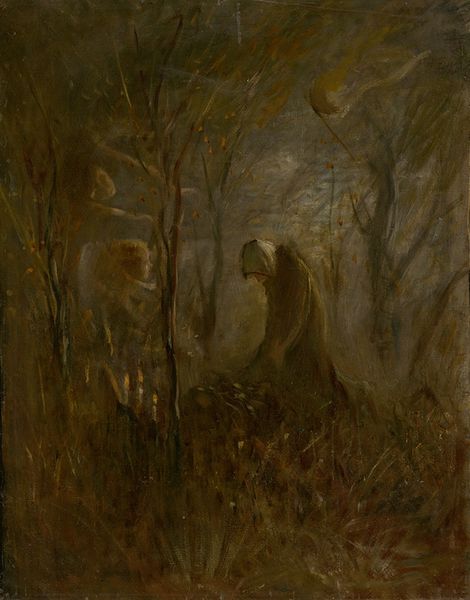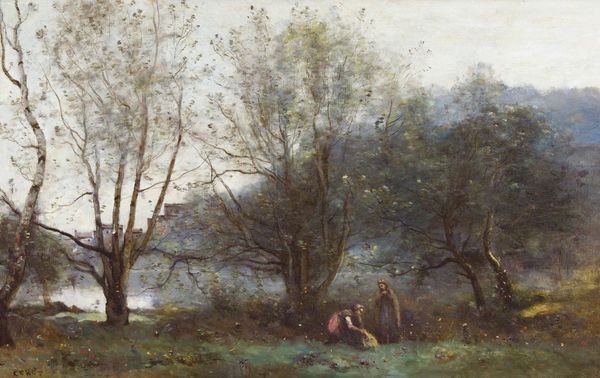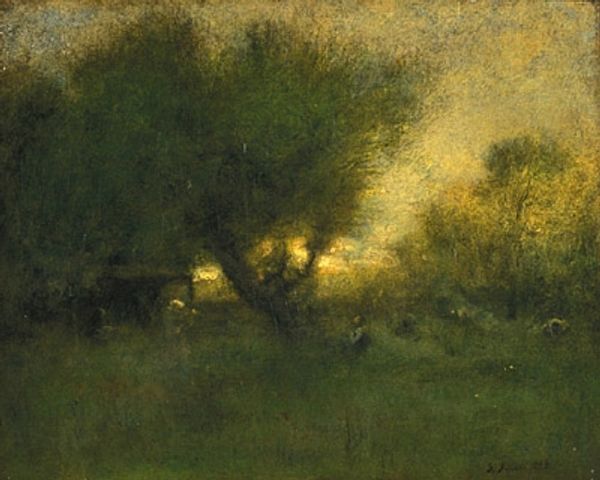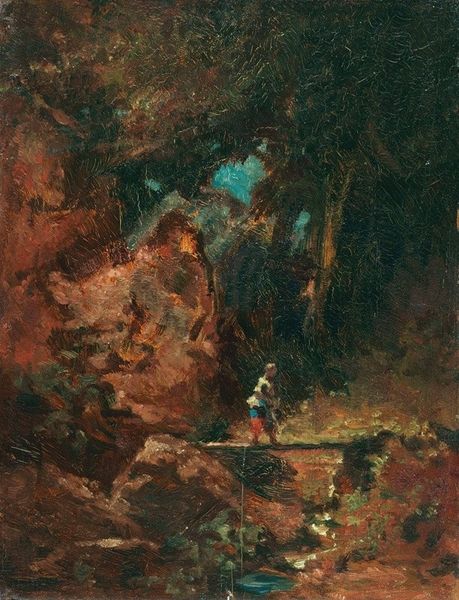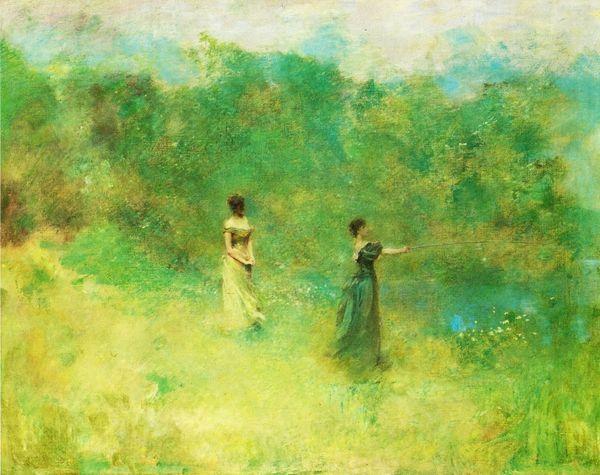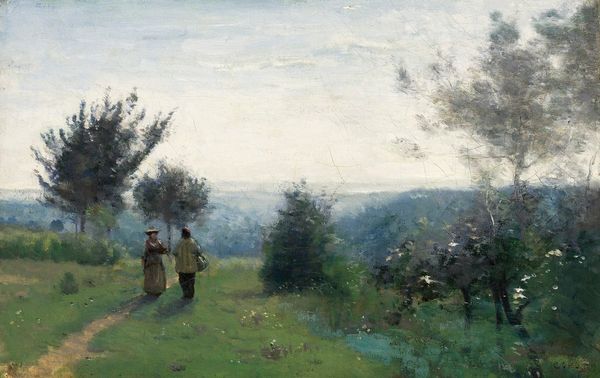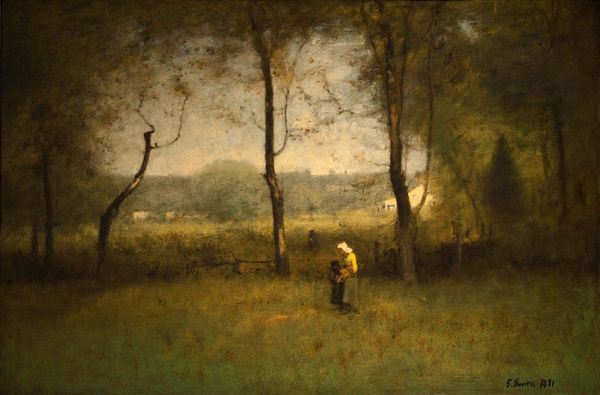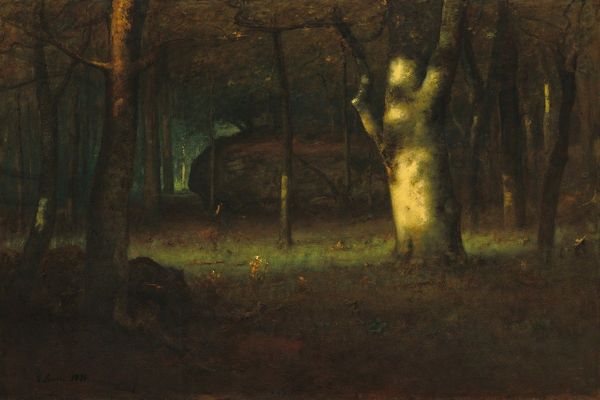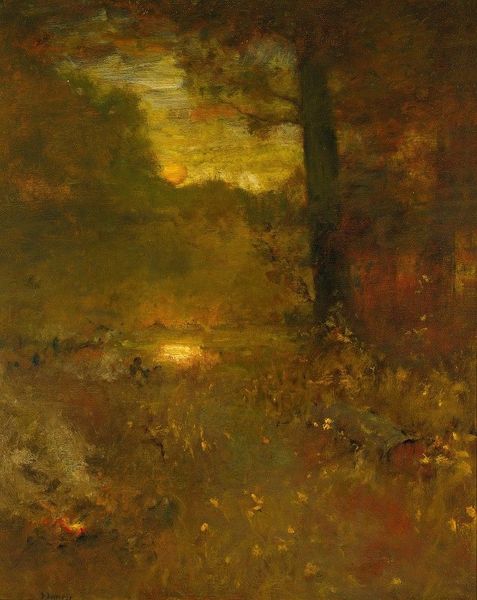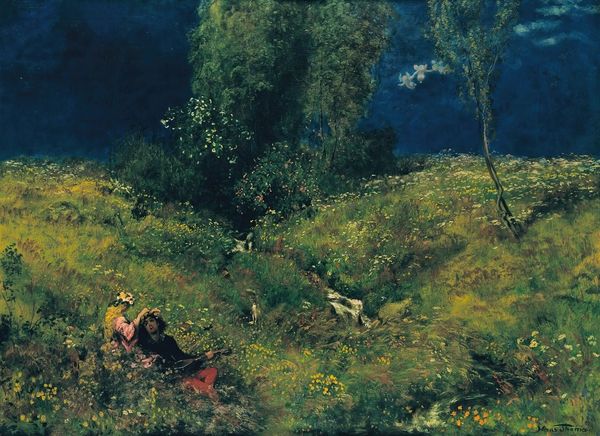
Copyright: Public Domain: Artvee
Thomas Wilmer Dewing's painting, "The White Birch," immerses us in a hazy, dreamlike space primarily composed of soft greens and muted earth tones. The figures are integrated into this pastoral setting, almost dissolving into the landscape. Dewing challenges traditional modes of representation through his handling of form. The figures are not sharply defined but are instead evoked with subtle tonal variations, creating a sense of ambiguity and ephemerality. This aesthetic choice has less to do with a mimetic representation of reality, and more to do with communicating the subtle emotional states the setting provokes. The painting invites contemplation on the fleeting nature of beauty and the subjective experience of nature. The painting's form and composition evoke a sense of mystery and invite us to ponder the relationship between the figures and their environment, and consider how Dewing destabilizes the conventional boundaries between figure and landscape.
Comments
No comments
Be the first to comment and join the conversation on the ultimate creative platform.

